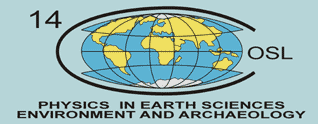

  |
GLIWICE RADIOCARBON LABORATORYOffer for radiocarbon dating of geological and archaeological objectsSummaryAbsolute dating by radioisotope methods including the one using carbon isotope 14C are widely applicable in geology, geomorphology, palaeogeography, palaeobotany, and in archaeology. By creating absolute time scales for different events in the history of Earth scientists are able to reconstruct changes in the climate and environment in the past, and the history of colonization and of development of human culture. DescriptionMeasurements of natural concentrations of 14C isotope in samples of organic or inorganic matter containing carbon enable assessment of their isotope age, i.e. the time since their burial in the Earth's crust. This isotope age may be converted into calendar age by applying established calibration procedures. Offer
We prefer cooperation by participation in research projects or some other way of scientific cooperation, that would conclude interpretation of research results and joint publications. Our scientific staff has knowledge and experience in cooperation with representatives of Earth Sciences, such as palaeogeography, geology, palaeobotany and archeology (see our list of publications). ContactAMS Datingdr Natalia Piotrowska prof. Anna Pazdur LSC datingDSc PhD Eng Adam Michczyński AddressSilesian University of Technology Sample requirements and estimated precision
Remarks: (1) The amount necessary for radiocarbon determination strongly depends on the degree of collagen preservation in bone. (2) The amount necessary for radiocarbon determination strongly depends on organic carbon contents in the sample. The numbers given here are based on the assumption of at least 1% organic carbon. (3) The precision of a radiocarbon determination (so-called "laboratory error") depends on the amount of carbon extracted from the sample after the required preparation technique (larger sample = larger precision) and also on the age of sample (older samples = smaller precision). Practical recommendations
Pricelist
Remarks (4)For foreign customers/payers a duty fees VAT is passed on the purchaser services, provided that the customer is liable for VAT in your country. Current exchange rates could be found on the NBP website. The prices listed above are the basic ones applied for measurements of individual samples. In case of orders comprising measurements for more than 5 samples and in case of scientific institutions the price is agreed individually with the submitter and are lower than basic prices. In case of our participation in scientific projects as contractor party and planned joint publication of results the price may be lowered by 30%. In addition, in case of signed agreement for scientific cooperation the financial system is different, too. We encourage to contact us while proposal is in preparation or at the early stage of realisation of the project. Fast radiocarbon LSC dating.In case when fast results are needed we can perform fast measurements. Below approximate prices are presented.
For fast measurements please contact Adam.Michczynski@polsl.pl (tel.: +48 32-237-24-88 or +48 32-237-22-16) before samples submission. Submission of samplesThe samples should be accompanied by filled sample description forms in either paper or electronic format. The form is downloadable as a MS Word file or PDF file. In the case most of the information about the samples would be repeated (e.g. samples from one core, the same material, differing only in depth), one description form may be sufficient. The samples should also come with a purchase order from the submitter in accordance with the internal regulations of the submitter's institution. In general, the order should contain data required in further official process, including registration in a database and writing out the invoice, such as:
Report and paymentThe submitter will obtain a report containing results of measurements when they are completed, usually several months from submission depending on the number and type of samples. Payment is due upon receipt of the invoice written out and sent by the financial office of the Silesian University of Technology. | ||||||||||||||||||||||||||||||||||||||||||||||||||||||||